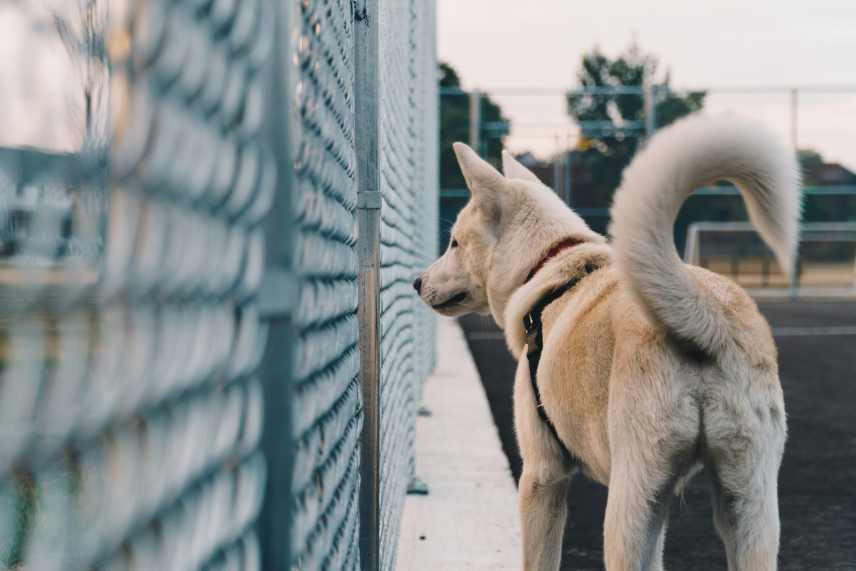Understanding the language of dog tail wagging is akin to unlocking a secret code to your furry friend’s emotions and intentions. While many of us view tail wagging as a straightforward sign of happiness, the reality is far more nuanced.
This comprehensive guide dives into the complexities of tail movements, offering dog owners a deeper insight into their pets’ feelings and behaviors. Discover the meaning behind dog tail wagging and how you can use this knowledge to improve your bond with your canine companion.

The Basics of Tail Language
Before diving into specifics, it’s crucial to grasp the basics of dog tail language. A dog’s tail can express a variety of emotions, ranging from joy and excitement to anxiety, fear, and aggression. The key to understanding lies in observing not just the wagging itself but also the tail’s position, movement speed, and the context in which the wagging occurs.
- Tail Position: The height at which a dog holds its tail can be an indicator of its confidence level and mood.
- Movement Speed: The speed of the wag can signify the intensity of the dog’s emotions.
- Wagging Direction: Recent studies suggest that the direction of the wag can also convey different emotions.
Decoding Tail Positions
High and Stiff: Alertness or Aggression
- A tail that is held high and stiff, possibly with rapid movements, often indicates an alert or aggressive state. This is a dog’s way of asserting dominance or showing readiness to confront a threat.
Neutral Position: Calm and Relaxed
- When a dog’s tail is in a neutral position, aligned with their spine, it typically signifies that the dog is calm and content. This is the baseline from which other emotions can be gauged.
Low or Tucked: Anxiety or Fear
- A tail positioned lower than the neutral stance or tucked between the legs is a clear sign of anxiety, fear, or submission. Dogs in this state are indicating that they do not pose a threat and may be feeling insecure.
Understanding Wagging Patterns
Rapid Wagging: Excitement or Happiness
- Fast, Broad Wags: Often seen during greetings, this type of wagging usually means your dog is extremely happy or excited to see you. It’s the canine equivalent of a joyful hello.
Slow Wagging: Uncertainty
- Slow, Deliberate Wags: A slow wag can indicate that a dog is feeling uncertain or cautious in a situation. They’re still processing their feelings and the environment.
Circular Wagging: Complete Joy
- Circular or Helicopter Tail: This is when the dog’s tail moves in a circular motion, often seen when they’re extremely happy or playful. It’s considered a very positive sign, indicating complete joy or excitement.
The Direction of the Wag: A New Discovery
Recent studies have shown that the direction of tail wagging can also convey different emotions in dogs.
- Wagging More to the Right: Suggests positive emotions, indicating the dog is comfortable and happy with the situation or person they’re interacting with.
- Wagging More to the Left: This can indicate negative emotions, suggesting the dog is facing something they want to move away from or that makes them uncomfortable.
Context Is Key
It’s important to remember that when interpreting dog tail wagging, context should always be considered. The same tail movement can mean different things in different situations. Observing your dog’s overall body language, including facial expressions and posture, in addition to the tail wagging, will give you a fuller picture of their emotional state.
Conclusion: The Subtle Art of Dog Tail Wagging
Dog tail wagging is an integral part of how dogs communicate with their human companions and other animals. By understanding the nuances behind each tail movement, dog owners can significantly enhance their communication with their pets, leading to stronger bonds and a deeper mutual understanding.
Remember, each dog is unique, and spending time observing and learning your dog’s specific tail language will enrich your relationship even more. This journey into the subtle art of tail wagging opens up new avenues for connecting with our canine friends, highlighting the depth and complexity of their emotional lives.
Related Topics:
Calming Canines: How to Help Your Anxious Dog Recover After a Stressful Event
How to Train a Dog to Be Calm: Effective Strategies and Techniques
5 Effective Strategies to Train Your Dog to Stop Pacing: From Exercise to Anxiety Relief
Recent Posts
Key Highlights Hanging Tongue Syndrome is a condition in which a dog's tongue hangs out of their mouth, and it can be caused by genetic predispositions or severe dental disease. Dogs with this...
Key Highlights Dogs stick out their tongues for various reasons, including relaxation, panting to cool down, the use of medications, and hanging tongue syndrome. Hanging Tongue Syndrome is a...

